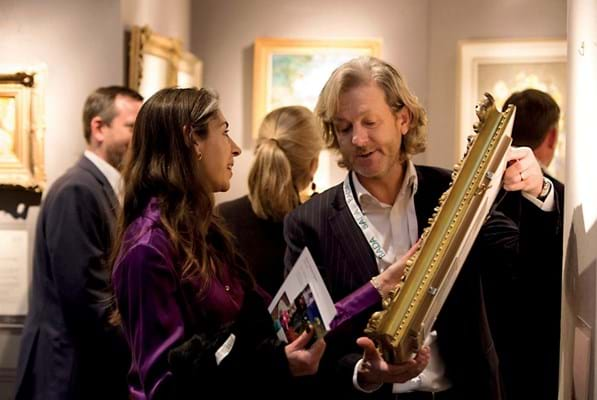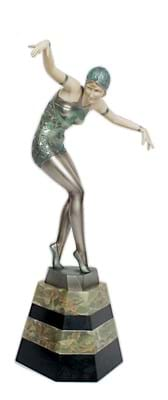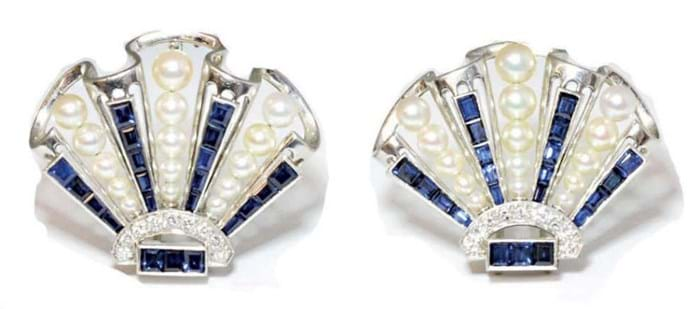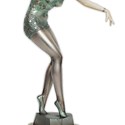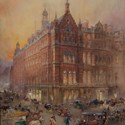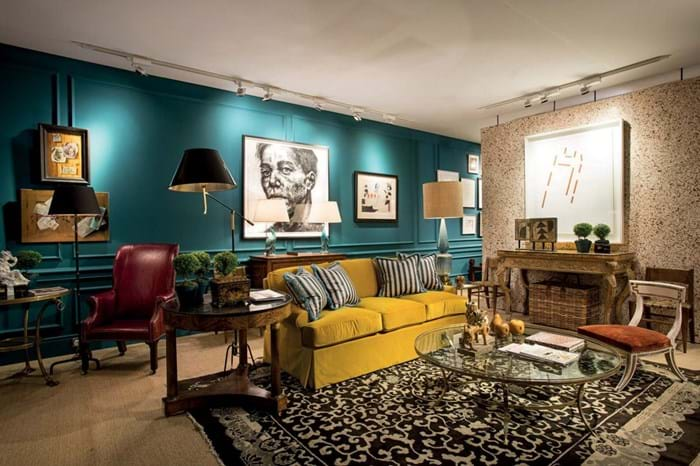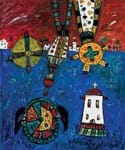“The days of people rushing through the doors and buying everything they can are over,” said Tim Wilson of Early Oak at Wysdom Hall during the event, which ran from March 14-20 in Chelsea’s Duke of York Square.
“It’s a different way of selling now. Buyers come in, go away and think, come back and talk about objects and measure them.”
Wilson is not lamenting. He sold throughout the event, witnessing sustained interest in furniture and works of art. The tapestries were also popular (“I’ve given dimensions out for them every day,” he said) and the largest went shortly after the event closed – the buyer spotted it on Wilson’s stand but had to go home and measure his available space. As a whole, the fair went “better than expected”.
After all, fairs that turn out to be marathons can be just as rewarding as their faster-paced alternatives.
Fine art specialist Atelier, for example, sold more than 20 pictures all told, including one of its highlights, an early 20th century painting of a London hotel, on the last day. The dealership’s Jonathan Voak dubbed it the gallery’s best BADA fair out of the 13 it has attended.
Antique lighting and glass specialists Fileman Antiques sold a quantity of lower-priced items to buyers every day of the event by the penultimate day. Most of the buyers came from the UK but there were also some antipodean buyers there as well.
Meanwhile, Art Deco specialist Jeroen Markies started on a high with a £24,000 ivory sculpture selling on the first day to a British buyer. But just as important were his furniture sales – including at least four pairs of chairs – that persisted throughout the event, resulting in a comparatively clear stand towards the close.
Founded in 1918, BADA has long sported an identity of a stately and enduring institution, happily rooted in the past.
Over the past few years, however, it has embarked on a number of new initiatives, anything from talks to technology, in a drive to recast itself as a modern trade body.
Perhaps it is no surprise, then, that on its centenary, when the fair might have devoted time and space to gazing back across its history, nostalgic pursuits were swept aside and replaced with strategies to tempt in first-time buyers and younger collectors.
“Buyers come in, go away and think, come back and talk about objects and measure them
It sported a trendier design concept, including new decoration, most notably a series of ‘trees’ within the fair, drooping with multi-coloured plastic panes designed by florist Simon Lycett.
Chief among the innovations was the installation of a pair of sizeable stands handed over to two leading contemporary designers, Joanna Wood and Paolo Moschino. Each stand displayed a contemporary living space incorporating key items borrowed from the stock of BADA members and demonstrating explicitly how items from around the fair could work in homes today.
Several exhibitors were openly critical, while more were simply dismissive of changes to the overall ‘look’ and the designers’ stands.
Others, such as Jonathan Coulborn of Thomas Coulborn & Sons, said those stands had brought in new clients this year.
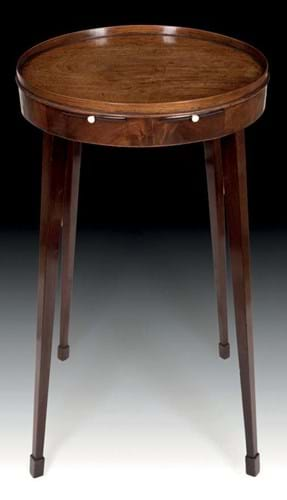
J Roger Antiques sold this George III oval mahogany urn table made in c.1790 at the BADA fair. It measures 2ft 3in (69cm) high and unusually features two trays for tea bowls rather than the usual one. It was part of the display on the designers’ stands and was offered for a price in the region of £2800.
While it is difficult to measure the impact such innovations actually have on the course of a fair, a number of pieces sold from the two designers’ stands. Fine art did particularly well. Atelier, for example, sold a JM Whistler etching, Annie Seated, while J Roger’s c.1790 George III oval mahogany urn table was snapped up by an interior designer.
It had been paired with some modern furniture and lighting and, as the gallery’s Carolyn Bayley pointed out, she would not, perhaps, have met the buyer were it not for the new initiative.
“I had a fantastic fair overall selling the dreaded brown furniture. I practically sold out,” she added. “The designer stands did bring great interest and a different element to the fair. It showed that antique furniture really can be mixed with modern pieces, which seems obvious but sometimes these things need to be demonstrated to attract new buyers.”
Overall, footfall was down on last year, which organisers attributed to another bout of icy weather.
Whatever the case may be, it seems that there was a steady supply of unfamiliar yet useful buyers in attendance. Wysdom Hall Oak, for example, made all of its in-fair sales to new clients.
Fine art dealer Harry Moore-Gwynn, who had paintings snapped up across the board, said he had made sales to a variety of buyers new and old. At least one of the new buyers was a very good potential fresh client. “That’s the main thing,” he said.
Taylor, meanwhile, offers traditional and contemporary pieces. While her more traditional pieces went to the usual brand of collector, she saw some pieces bought by, newer, younger buyers. None so young, however, as the teenage members of an Eton School group she saw, being led around by a schoolmaster speaking to them about English watercolours. The collectors of tomorrow?
Karen Taylor, exhibiting under her own name for the first time at BADA, sums up the positive results succinctly. She mixes contemporary watercolours into her main stock of traditional works – not dissimilar from the fair itself.
“I recognised the profile of the people I was selling to,” she says. “There were collectors there and decorative buyers. It went very well for me and I sold to existing and new customers. I’m looking forward to doing it again next year.”
As that Moore-Gwynn comment indicates, the chance to come to a fair and meet new clients is really what makes the whole endeavour worthwhile.
The next BADA event is the second edition of BADA Collection at The Lanesborough on October 5-7.


